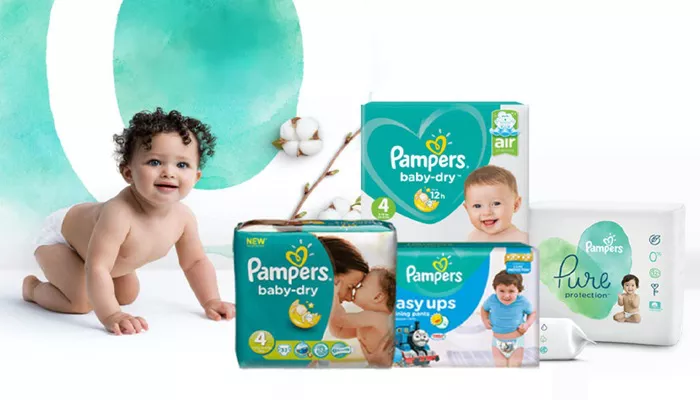Diapers are essential products for parents and caregivers of infants and toddlers. They come in various brands and styles, designed to keep babies comfortable and dry. Among the many brands available, Pampers stands out as one of the most well-known and trusted names in the market. This article delves into the differences between Pampers and generic diapers, exploring various aspects such as design, materials, performance, and cost.
1. Understanding Diapers
Diapers are garments that absorb and contain a baby’s waste, keeping them clean and dry. They come in two primary types: disposable and cloth. Disposable diapers are made from absorbent materials and are designed for single use, while cloth diapers are reusable and made from fabric.
Disposable Diapers:
Made from absorbent materials like cellulose and superabsorbent polymers.
Designed for single use and then discarded.
Offer convenience and ease of use.
Cloth Diapers:
Made from fabric materials like cotton or bamboo.
Reusable and washable.
Eco-friendly and cost-effective in the long run.
2. Overview of Pampers
Pampers is a brand of disposable diapers owned by Procter & Gamble. Launched in the 1960s, Pampers has become synonymous with quality and reliability. The brand offers a wide range of products tailored to different stages of a baby’s growth, ensuring comfort and protection.
History of Pampers:
Introduced in 1961 by Procter & Gamble.
Revolutionized the diaper market with its innovative design and materials.
Continues to evolve with new technologies and features.
3. Key Differences Between Pampers and Generic Diapers
Materials and Construction
Pampers:
High-quality materials that are gentle on a baby’s skin.
Multiple layers for superior absorption and leakage protection.
Soft and breathable outer cover to keep the baby comfortable.
Generic Diapers:
Materials and quality can vary widely between brands.
May not offer the same level of absorption and leakage protection.
Outer cover might be less breathable and soft.
Absorbency and Leakage Protection
Pampers:
Known for excellent absorbency, keeping the baby dry for longer periods.
Features like extra absorb channels and wetness indicators.
Effective leakage barriers and leg cuffs to prevent leaks.
Generic Diapers:
Absorbency levels can differ, sometimes requiring more frequent changes.
May lack advanced features like wetness indicators.
Leakage protection can be less reliable, leading to potential messes.
Comfort and Fit
Pampers:
Designed to provide a snug and comfortable fit.
Flexible waistbands and leg cuffs that move with the baby.
Soft materials to minimize skin irritation and rashes.
Generic Diapers:
Fit and comfort can be inconsistent.
Waistbands and leg cuffs may not be as flexible or secure.
Materials might cause irritation or rashes in some babies.
4. Performance and Reliability
Pampers:
Consistently high performance in terms of absorbency, leakage protection, and comfort.
Trusted by parents and caregivers worldwide.
Extensive research and development to continually improve products.
Generic Diapers:
Performance can vary significantly between brands.
Some may offer similar performance to Pampers, while others may fall short.
Reliability can be inconsistent, requiring careful selection.
5. Cost Considerations
Pampers:
Generally more expensive than generic brands.
Higher cost is often justified by superior quality and performance.
Frequent promotions and discounts available.
Generic Diapers:
More affordable, making them a popular choice for budget-conscious parents.
Cost savings can come at the expense of quality and performance.
Some generic brands offer excellent value for the price.
SEE ALSO: How Many Diapers Are in Pampers Super Pack?
6. Environmental Impact
Pampers:
Working towards sustainability with eco-friendly initiatives.
Efforts to reduce carbon footprint and waste.
Introduction of more sustainable materials in some product lines.
Generic Diapers:
Environmental impact varies between brands.
Some may prioritize sustainability, while others may not.
Reusable cloth diapers offer a more eco-friendly alternative.
7. Special Features and Innovations
Pampers:
Continual innovation with features like wetness indicators, extra absorb channels, and breathable materials.
Specialized products like Pampers Pure, made with plant-based materials.
Collaboration with healthcare professionals to ensure safety and effectiveness.
Generic Diapers:
Innovation levels vary widely between brands.
Some may offer basic features, while others may include advanced options.
Specialized products may be limited or non-existent.
8. Parental Preferences and Feedback
Pampers:
Highly rated and recommended by parents and caregivers.
Consistently positive feedback on performance, comfort, and reliability.
Strong brand loyalty and trust.
Generic Diapers:
Feedback can be mixed, depending on the brand.
Some parents find excellent alternatives to Pampers, while others prefer the reliability of Pampers.
Brand loyalty can vary, with some parents willing to try different options.
9. Choosing the Right Diaper
Selecting the right diaper for a baby involves considering various factors, including absorbency, comfort, fit, cost, and environmental impact. While Pampers offers high-quality products with consistent performance, generic diapers can provide affordable alternatives. Parents may need to try different brands to find the best option for their baby.
Tips for Choosing Diapers:
Consider the baby’s skin sensitivity and comfort.
Evaluate the diaper’s absorbency and leakage protection.
Compare costs and look for promotions or discounts.
Read reviews and seek recommendations from other parents.
Assess the environmental impact and choose eco-friendly options if possible.
Conclusion
The differences between Pampers and generic diapers lie primarily in materials, construction, performance, cost, and environmental impact. Pampers is a trusted brand known for its high-quality products and innovative features, providing reliable performance and comfort. Generic diapers, on the other hand, offer more affordable options, though their quality and performance can vary.
Ultimately, the choice between Pampers and generic diapers depends on individual preferences, budget, and specific needs. By understanding the key differences and considering various factors, parents can make informed decisions to ensure their baby stays comfortable, dry, and happy.


